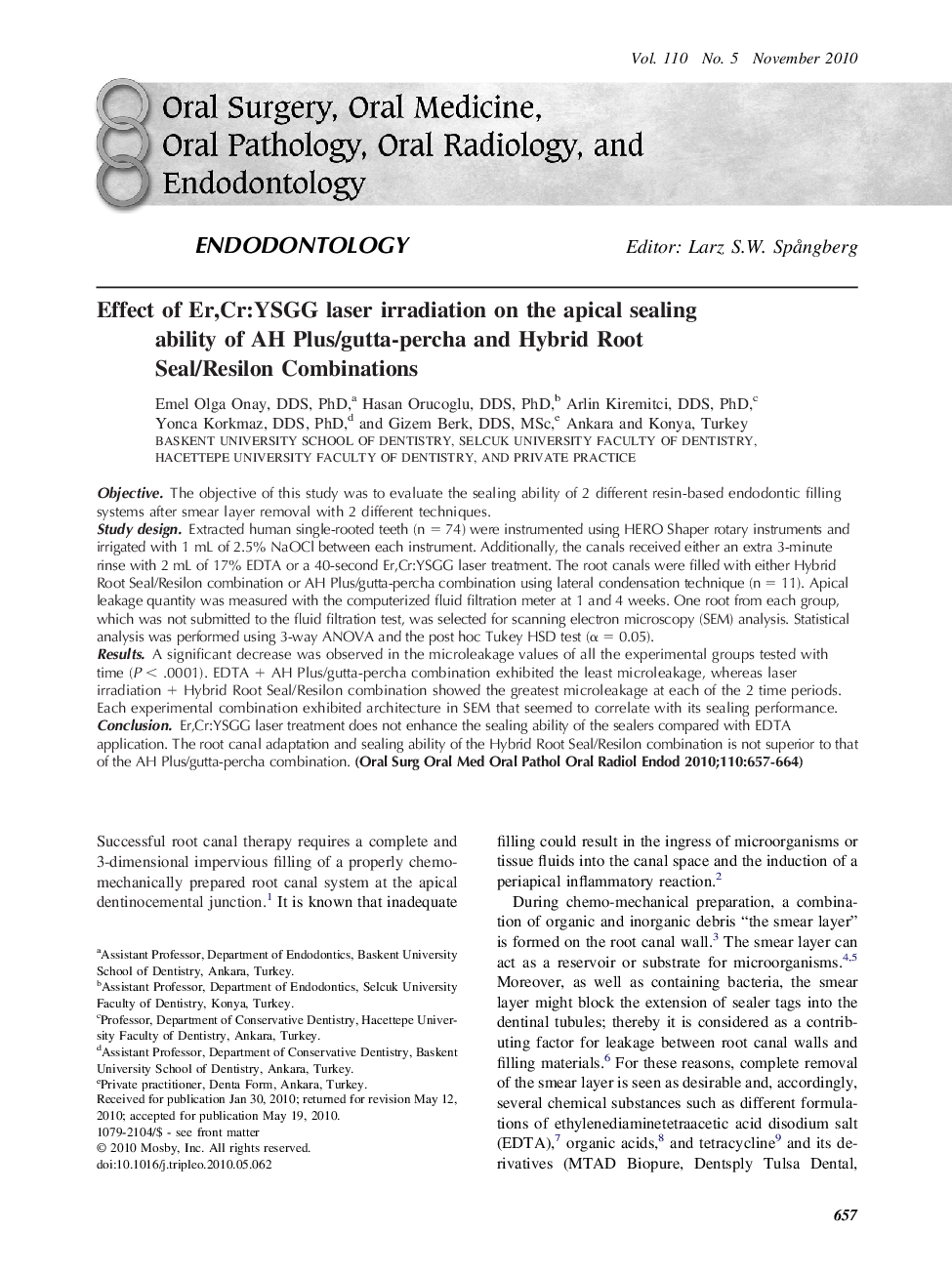| Article ID | Journal | Published Year | Pages | File Type |
|---|---|---|---|---|
| 3167469 | Oral Surgery, Oral Medicine, Oral Pathology, Oral Radiology, and Endodontology | 2010 | 8 Pages |
ObjectiveThe objective of this study was to evaluate the sealing ability of 2 different resin-based endodontic filling systems after smear layer removal with 2 different techniques.Study designExtracted human single-rooted teeth (n = 74) were instrumented using HERO Shaper rotary instruments and irrigated with 1 mL of 2.5% NaOCl between each instrument. Additionally, the canals received either an extra 3-minute rinse with 2 mL of 17% EDTA or a 40-second Er,Cr:YSGG laser treatment. The root canals were filled with either Hybrid Root Seal/Resilon combination or AH Plus/gutta-percha combination using lateral condensation technique (n = 11). Apical leakage quantity was measured with the computerized fluid filtration meter at 1 and 4 weeks. One root from each group, which was not submitted to the fluid filtration test, was selected for scanning electron microscopy (SEM) analysis. Statistical analysis was performed using 3-way ANOVA and the post hoc Tukey HSD test (α = 0.05).ResultsA significant decrease was observed in the microleakage values of all the experimental groups tested with time (P < .0001). EDTA + AH Plus/gutta-percha combination exhibited the least microleakage, whereas laser irradiation + Hybrid Root Seal/Resilon combination showed the greatest microleakage at each of the 2 time periods. Each experimental combination exhibited architecture in SEM that seemed to correlate with its sealing performance.ConclusionEr,Cr:YSGG laser treatment does not enhance the sealing ability of the sealers compared with EDTA application. The root canal adaptation and sealing ability of the Hybrid Root Seal/Resilon combination is not superior to that of the AH Plus/gutta-percha combination.
